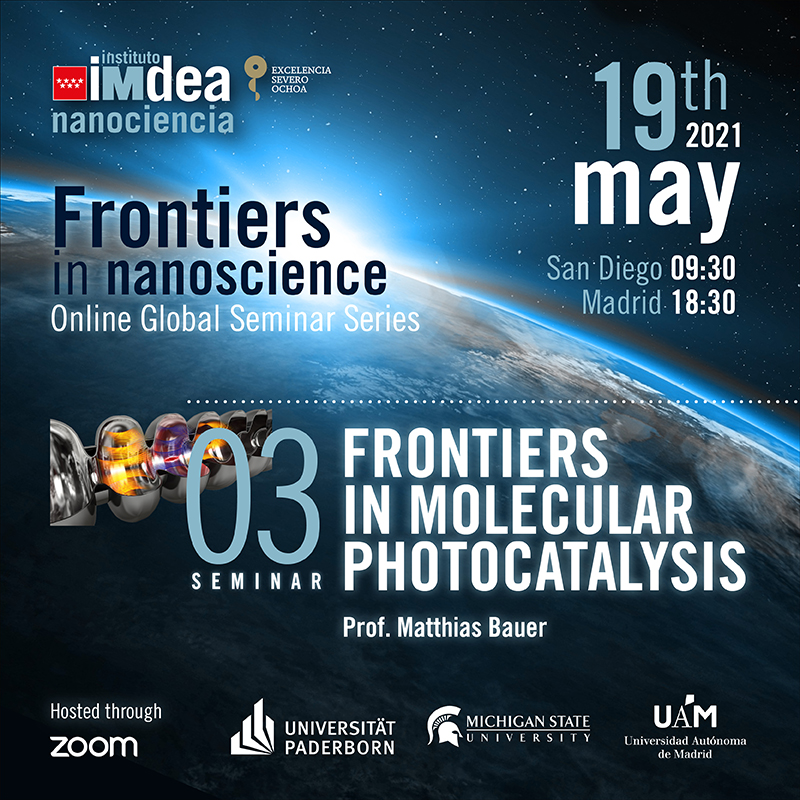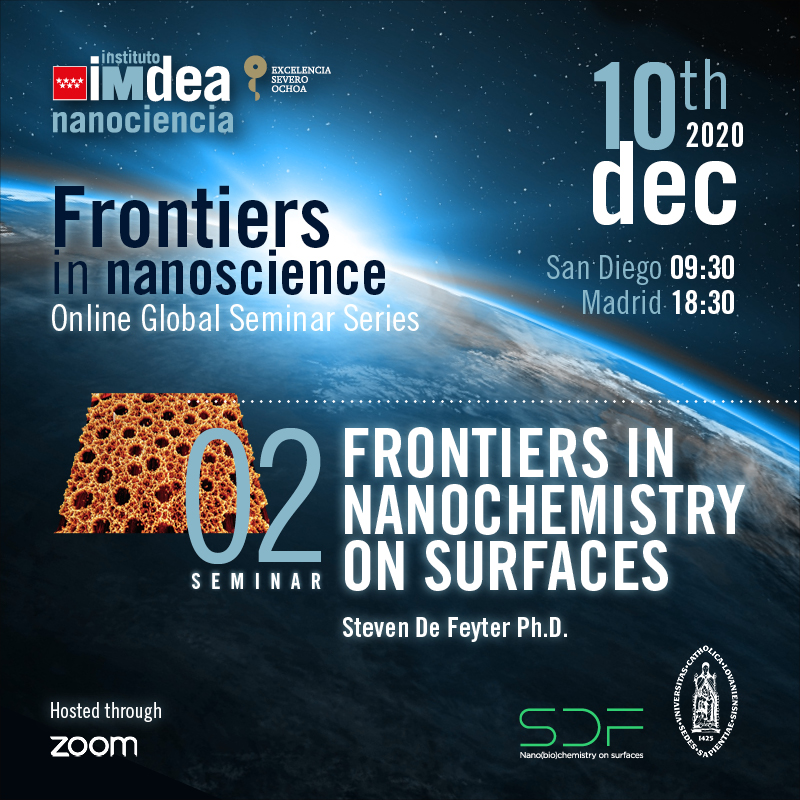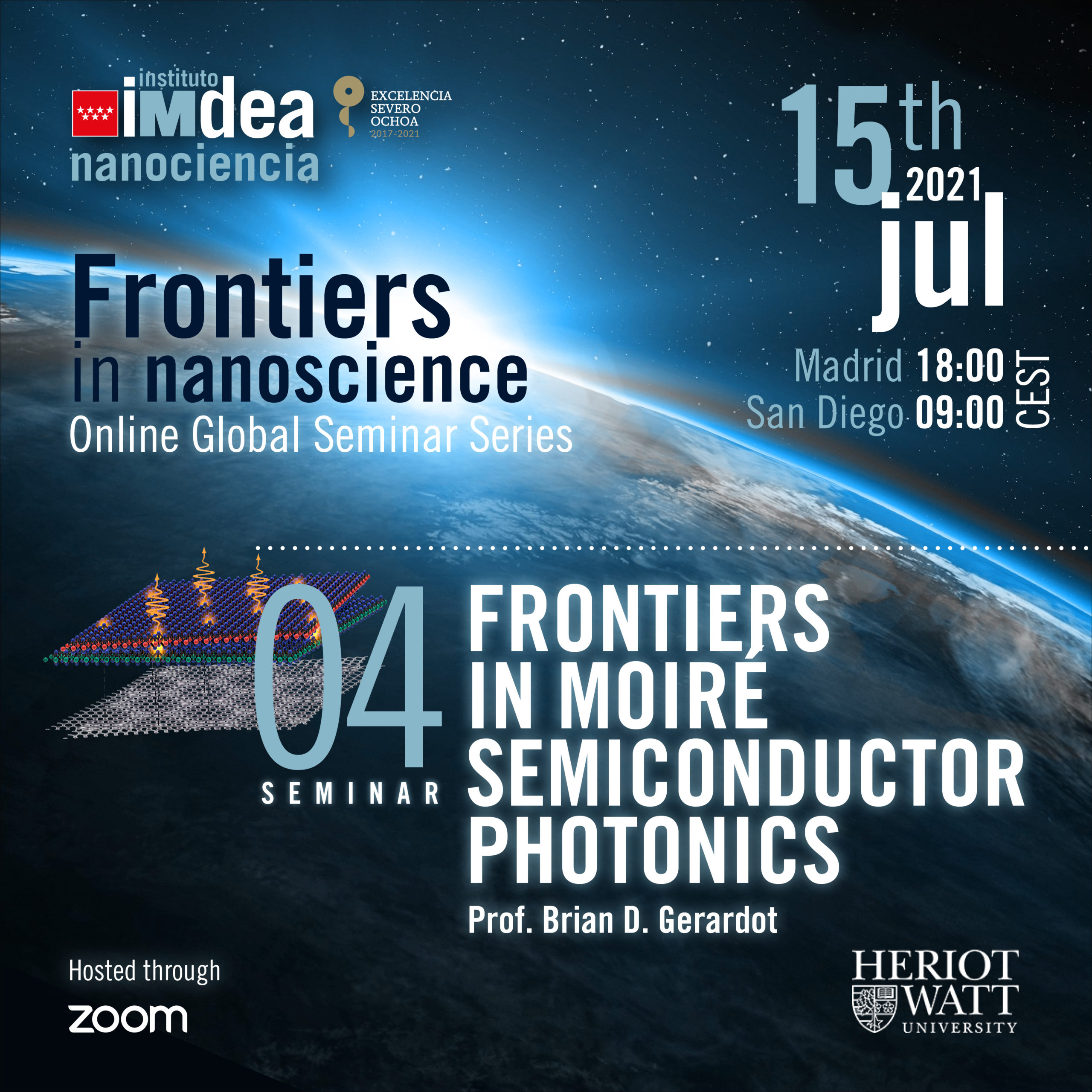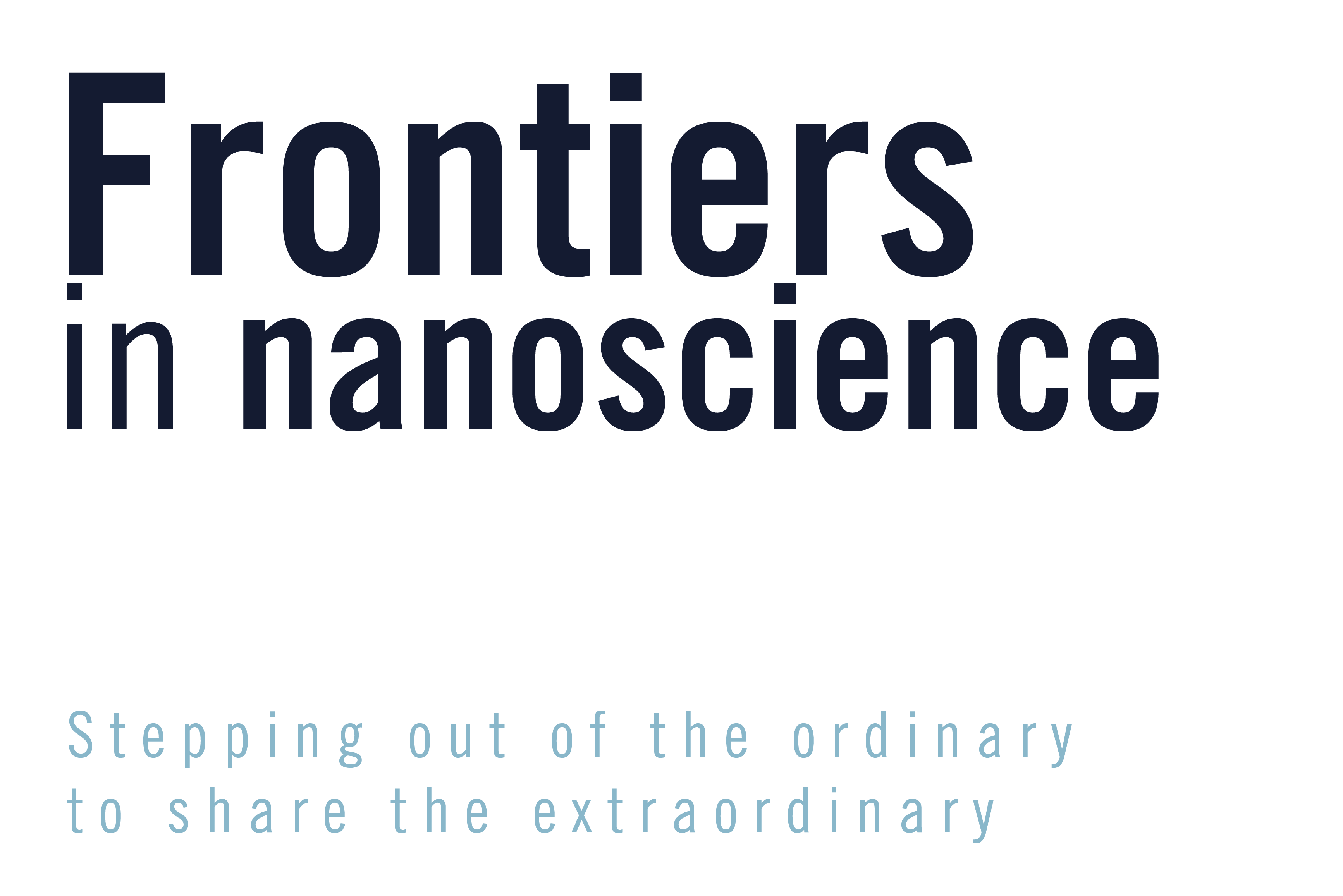Frontiers in Nanoscience is an Online Global Seminar Series organized by IMDEA Nanoscience to showcase some of the very best and promising researchers and present and discuss exciting new advances at the frontier of knowledge.
Online Seminars
Neuromorphic computing

Neuromorphic computing, which mimics the architecture and components of biological neural networks, is an emerging technology which might overcome some of the challenges that traditional computing is facing. In this talk, we will show how resistive switching can be used to mimic the functionalities of the two builiding blocks of a neural network: neuron and synapse. We will focus specially on the resistive switching caused by the voltage-triggered insulator to metal transition, discussing aspects such as its underlying mechanism, dynamics and its spatial distribution. We will also show some of our recent efforts towards emulating neuronal behaviour using this phenomenology.
Nanoscale Molecular Photocatalysis

Prof. Matthias Bauer will present his achievements in cutting-edge hard X-ray methods at synchrotrons and X-ray free electron lasers and recent attempts to obtain base metal complexes and assemblies for photocatalytic proton reduction. This way of producing hydrogen with sunlight is a prominent example of how to increase the sustainable character of water splitting and to realize a nearly infinite number of devices for this purpose. This seminar connects molecular photocatalysis and transition metal inorganic chemistry with advanced spectroscopic methods at large scale research facilities.
Nanochemistry on surfaces

Prof. De Feyter is world leading scientist in nanochemistry and supramolecular chemistry on surfaces. His research central theme is self-assembly on surfaces, with a focus on the relation between structure and function. Recent research activities carried out by his group cover a broad range of topics such as two-dimensional crystal engineering (e.g. formation of nanoporous surfaces, chirality at interfaces), templating, dynamics and reactivity. These studies aim at bringing insight in the fundamental aspects of molecule-substrate interactions and molecular, topics that are certainly at the frontier of nanoscience.
Quantum Optics

The unique physical properties of two-dimensional materials, combined with the ability to stack unlimited combinations of atomic layers with arbitrary crystal angle, has unlocked a new paradigm in designer quantum materials. For example, when two different monolayers are brought into contact to form a heterobilayer, the electronic interaction between the two layers results in a spatially periodic potential-energy landscape: the moiré superlattice. The moiré superlattice can create flat bands and quench the kinetic energy of electrons, giving rise to strongly correlated electron systems. Further, single particle wave packets can be trapped in the moiré potential pockets with three-fold symmetry to form ‘quantum dots’ which can emit single photons. Here I will introduce and survey the state-of-the-art in the physics of moiré superlattices made by stacking two layers of transition metal dichalcogenide semiconductors together with a slight twist, with a focus on strongly correlated electronic systems and quantum dots. Finally, I will provide a perspective on the opportunities that lie ahead in this rich system.



